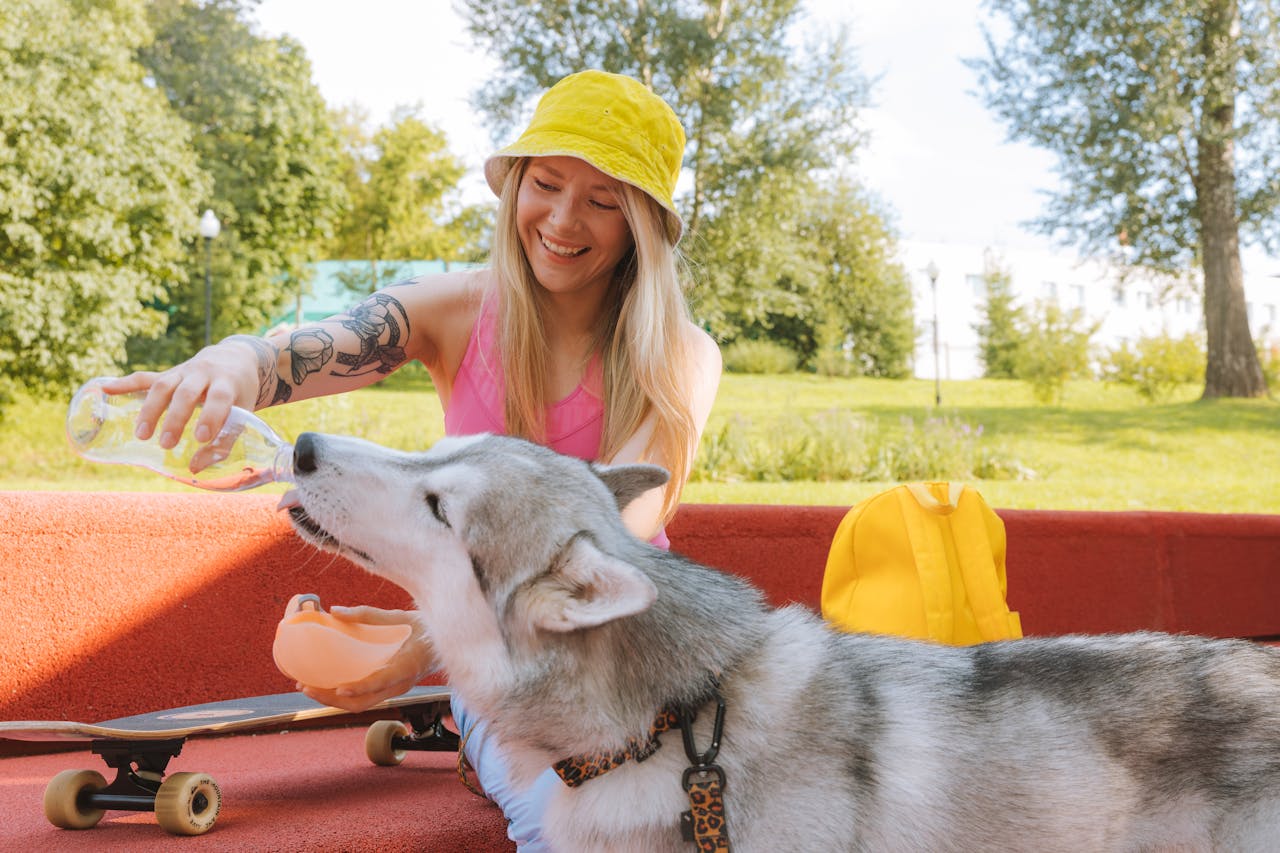The Benefits of Water for Your Pet

Did you know that your furry friend’s secret to a happy, healthy life might be right under your nose? It’s not a fancy toy or a treat for your pet, it’s something as simple as water! Let’s take a tour into the refreshing world of pet hydration and uncover why water is your pet’s best friend.
We all agree that water is essential for life, but have you ever stopped to think about just how important it is for your pet? Whether you have a playful pup, a curious cat, or a small furry companion, water plays a crucial role in keeping them healthy, happy, and full of energy.
Importance of hydration for pets
Just like humans, pets need water to survive and thrive. Water makes up a significant portion of their body weight and is involved in nearly every bodily function. From regulating body temperature to aiding digestion, water is the unsung hero of your pet’s health.
Overview of water’s role in pet health
Water is a vital component in your pet’s overall wellbeing. Apart from quenching their thirst, it helps transport nutrients throughout the body, removes waste products, supports organ function, and even affects your pet’s mood and energy levels. In short, water is the foundation of good health for your furry friend.
Physiological Benefits of Water for Pets
Let’s take a closer look at how water works its magic in your pet’s body.
1. Maintaining body temperature
Unlike humans, most pets can’t sweat all over their bodies to cool down. Dogs pant and cats groom themselves to regulate their temperature, but these methods rely on water to be effective. Proper hydration helps your pet maintain a stable body temperature, whether they’re lounging in the sun or chasing a ball in the park.
2. Aiding digestion and nutrient absorption
Water is essential for breaking down food and moving it through your pet’s digestive system. It helps dissolve nutrients, making them easier for your pet’s body to absorb. Without enough water, your pet might struggle to get all the goodness from their food, potentially leading to nutritional deficiencies.
3. Supporting kidney function and waste removal
Your pet’s kidneys work hard to filter waste products from the blood and produce urine. Adequate water intake helps flush out these waste products, reducing the workload on the kidneys and helping to prevent urinary tract issues. Think of water as your pet’s internal cleaning system!
4. Lubricating joints and cushioning organs
Water is a key component of the fluid that lubricates your pet’s joints, helping them move smoothly and comfortably. It also forms part of the protective padding around organs, cushioning them from everyday bumps and movements. For active pets or those with joint issues, proper hydration can make a world of difference in their comfort and mobility.
Hydration and Pet Energy Levels
Ever noticed how a well-hydrated pet seems to have an extra spring in their step? There’s a good reason for that.
● Impact on physical activity and endurance
Water plays a crucial role in energy production at the cellular level. When your pet is well-hydrated, their cells can function more efficiently, leading to better overall energy levels. This means your pet can play longer, run faster, and enjoy their favourite activities without tiring as quickly.
● Effects on mental alertness and mood
Hydration not only affects your pet’s body, it impacts their mind too. Proper hydration helps maintain good blood flow to the brain, supporting mental alertness and cognitive function. A well-hydrated pet is often more responsive, alert, and ready to engage in training or playtime. On the flip side, even mild dehydration can lead to lethargy and irritability in pets.
Water’s Role in Pet Skin and Coat Health
Your pet’s skin and coat are often a reflection of their overall health, and water plays a big part in keeping them looking and feeling great.
● Promoting skin elasticity
Well-hydrated skin is more elastic and resilient. This means it’s better able to bounce back from stretching and less prone to injuries. For pets with skin conditions, proper hydration can help manage symptoms and promote healing.
● Supporting a healthy, shiny coat
Have you ever admired your pet’s glossy coat after a good grooming session? Water helps transport nutrients to the hair follicles, promoting healthy growth and giving your pet’s coat that enviable shine. Dehydration, on the other hand, can lead to a dull, brittle coat that’s more prone to shedding and breakage.
Proper Hydration and Pet Urinary Health
When it comes to your pet’s urinary system, water is a powerful preventive tool. It’s usefulness is more than just a drink.
● Preventing urinary tract infections
A well-hydrated pet produces more urine, which helps flush out the urinary tract regularly. This constant flushing action can help prevent the buildup of bacteria that could lead to urinary tract infections. For pets prone to these infections, encouraging water intake can be a simple yet effective preventive measure.
● Reducing the risk of bladder stones
Bladder stones form when certain minerals in your pet’s urine become too concentrated. By drinking plenty of water, your pet can help dilute these minerals, making it less likely for stones to form. This is especially important for breeds or species that are prone to bladder stones.
Signs of Dehydration in Pets
Recognizing dehydration in pets is crucial for their health and well-being. Unlike humans, pets can’t tell us when they’re thirsty, so it’s up to us to spot the signs.
1. Physical symptoms
- Sunken eyes: If your pet’s eyes appear sunken or dull, it could be a sign of dehydration.
- Dry nose and gums: A healthy pet should have a moist nose and gums. If they feel dry or sticky, it’s time to worry.
- Skin elasticity test: Gently pinch and pull up the skin between your pet’s shoulder blades. If it doesn’t spring back quickly, your pet might be dehydrated.
- Thick saliva: Dehydration can cause saliva to become thick and stringy.
- Panting: While normal for dogs, excessive panting can indicate dehydration.
2. Behavioural changes
- Lethargy: A pet who is usually active becoming sluggish could be a sign of dehydration.
- Loss of appetite: Dehydrated pets often lose interest in food.
- Increased water consumption: If your pet suddenly starts drinking much more than usual, it could be trying to combat dehydration.
- Changes in urination: Less frequent urination or darker urine can indicate dehydration.
Remember, these signs can also indicate other health issues. If you suspect your pet is dehydrated, especially if symptoms persist after offering water, it’s best to consult your veterinarian.
Encouraging Pet Water Consumption
1. Providing fresh, clean water
- Change water daily: Pets prefer fresh water, just like we do.
- Clean bowls regularly: Bacteria can build up in water bowls, deterring pets from drinking.
2. Types of water bowls and fountains
- Wide bowls: Some pets prefer wide, shallow bowls that don’t touch their whiskers.
- Fountains: Moving water can entice pets to drink more.
- Multiple locations: Place water sources throughout your home to encourage drinking.
3. Adding moisture to pet food
- Wet food: Consider mixing wet food with dry kibble to increase moisture intake.
- Broth: Low-sodium broth can make water more appealing to pets.
Special Hydration Considerations
Different pets have different hydration needs, and various factors can affect these needs.
1. For different pet species
- Dogs: Generally need about an ounce of water per pound of body weight daily.
- Cats: Often prefer running water and may drink less if fed wet food.
- Small animals: Rodents and rabbits often get much of their water from fresh vegetables.
2. Based on age, size, and activity level
- Puppies and kittens: Need more water relative to their size due to higher activity levels.
- Senior pets: May need encouragement to drink due to decreased thirst sensation.
- Active pets: Dogs who exercise a lot or working dogs need more water to replace what’s lost through panting.
- Overweight pets: May need more water to support their body mass.
3. In various climates and seasons
- Hot weather: Increases water needs dramatically. Always provide extra water in summer.
- Cold weather: Pets may drink less, but still need adequate hydration.
- Humid climates: Can increase water needs as pets may pant more to cool down.
- Dry climates: May increase water loss through respiration.
By the way, these are general guidelines. Always observe your pet’s individual needs and consult with your vet for personalised advice.
Water Safety for Pets
1. Ensuring water quality
- Use clean, fresh water: Tap water is usually fine, but if you wouldn’t drink it, neither should your pet.
- Consider filters: If your tap water has a strong odour or taste, a filter might help.
2. Avoiding contaminated water sources
- Outdoor water: Discourage drinking from puddles, ponds, or streams which may contain harmful bacteria or parasites.
- Toilet water: Keep toilet lids closed to prevent pets from drinking potentially contaminated water.
Conclusion
Water is truly a cornerstone of your pet’s health, affecting everything from their energy levels to their urinary health. By ensuring your pet stays well-hydrated, you’re setting them up for a healthier, happier life.
Providing clean, fresh water is one of the simplest yet most important things you can do for your pet’s health. Pay attention to your pet’s drinking habits, look out for signs of dehydration, and don’t hesitate to contact your vet if you have concerns.
While water might seem simple, its benefits for your pet are anything but basic. By ensuring your furry friend stays well-hydrated, you’re ensuring that they are healthier, and happier. So the next time you fill up your pet’s water bowl, give yourself a pat on the back because you’re doing more for their health than you might realise.
To a lot of people out there, clean water is a luxury. At AquaMaya, we are putting in a lot of work to make clean water accessible to 10 million people in West Africa. Your support in any capacity, will go a long way in bringing clean water to those who need it most.
Stay hydrated, keep your pet hydrated and help others stay hydrated.
Sources:
1. https://www.petmd.com/dog/general-health/is-tap-water-safe-for-dogs






